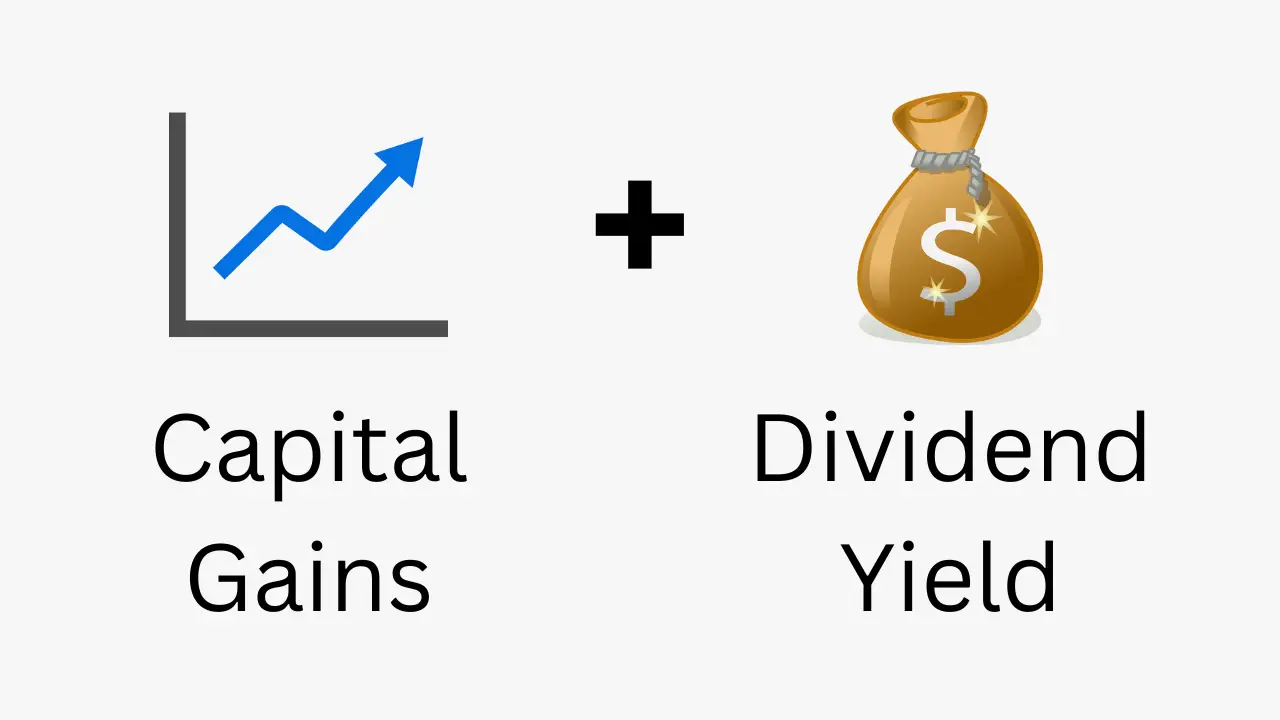In the second lesson of our investments course, we’ll be learning about a stock’s total return and its two components: capital gains and dividend yield.
Contents
Total return formula
Imagine that you bought a stock a few months ago for $10 per share and the current share price is $12. Based on what we learned in the previous lesson, your net return over this period would be:
$12 / $10 − 1 = 20%
But, let’s assume that the stock just a paid dividend of $0.5 per share as well. We need to take this account when calculating the stock’s return as the dividend payment increases the total profit we make from our investment. In general, a stock’s total return is defined as follows:
Total return = Capital gains + Dividend yield
where capital gains is the part of return due to the change in the share price and dividend yield captures the portion of return attributed to dividend payments.
And, the total return formula can be written as:

Solved exercise
Question: An investor bought shares of a stock at $10/share at the end of December. The share price was $8, $10, and $11 at the end of January, February, and March, respectively. Moreover, the stock paid a dividend of $2/share in February. Calculate the investor’s net return for each month.
Solution: The monthly net returns are:
- January: ($8 − $10) / $10 = −20%.
- February: ($10 − $8 + $2) / $8 = 50%.
- March: ($11 − $10) / $10 = 10%.
Total return calculator
With the calculator below, you can compute a stock’s total return based on the change in its price and any dividends paid.
Video tutorial
The following tutorial covers the basics of return calculations. The part about total returns begins at 3:30.
Summary
Stock investments offer two main sources of returns: capital gains, which arise from increases in the share price over time, and dividend payments. While capital gains reflect changes in the stock’s value, dividends contribute to the overall return as part of the dividend yield. Combining these components yields the total return on your investment.
If you would like to learn more about the type of firms that pay dividends and about firms’ propensity to pay dividends, we recommend the paper by Fama and French below.
Further reading:
Fama and French (2001) ‘Disappearing dividends: changing firm characteristics or lower propensity to pay?‘ Journal of Financial Economics, Vol. 60 (1), pp. 3-43.
What is next?
We hope you’re enjoying our investments course. Please see below what you can study next.
- Previous lesson: We explained how to calculate gross returns and net returns.
- Next lesson: The distinction between nominal returns and real returns and the impact of inflation on investment returns.
If you’d like to give us feedback about our content, you can reach us here.

